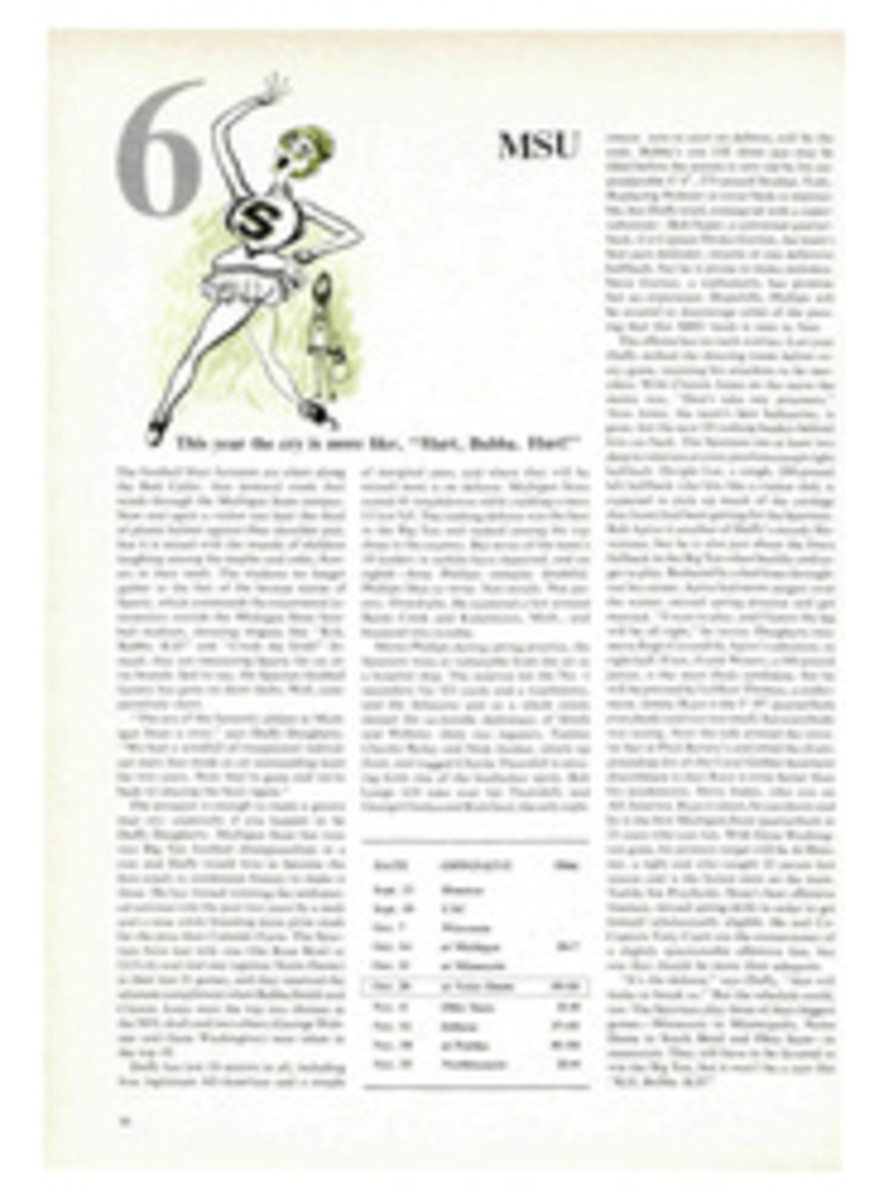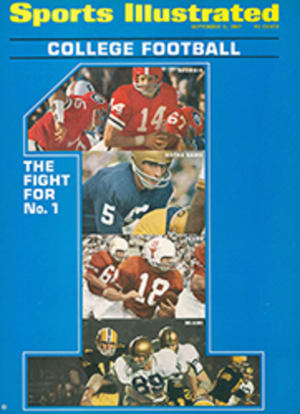
Britain's First Try at the America's Cup
Although I have spent my life as a flyer and an officer in the R.A.F., my true love has always been the sea. Before the dark shadow of World War II fell across Europe I had collected a fine nautical library. A German bomb dropped on an obscure little East Anglian town destroyed all my books in a single night, and after the war, when I became editor of a yachting journal, my first concern was to rebuild my library.
I was still surrounded by piles of unsorted books until just last year, when a change of houses forced me to winnow out the crop. While I was doing so I came across a dirty, water-stained, old log book with the binding split and the cover peeling off. I was about to dispatch it to the rubbish heap when I noticed the name Cambria, in almost undecipherable letters, on the cover. The name rang a bell, and I took a closer look: Log Book of the Yacht Cambria on a Voyage from Queenstown 4 July 1870 to New York. Now I remembered: the Cambria, of course. She was the first challenger to cross the ocean in an attempt to bring the famed America's Cup back to England and the only one forced to sail against an entire fleet of defenders.
I turned the pages, yellowed with age; the ink was brown and faded but decipherable through a magnifying glass. Although the handwriting left something to be desired, I was soon in no doubt that it was an original record of the first challenge, kept by Richard Rood, age 28, Cambria's second mate. The first entry read: "Queenstown Towards New York. Remarks: Monday July 4th 1870—Wind West. People employed getting stores on board and preparing ship for sea."
The log revealed that Cambria was commanded by R. S. Tannock, whose ship's company consisted of first and second mates, bosun, first and second cooks, chief and second stewards, two assistant sailing masters, 21 able seamen and one cabin boy, age 13—a total of 33 professional seamen. They were mostly young men in their 20s and 30s—they needed to be to handle the huge sails of the 200-ton schooners of those days. The after-guard consisted only of Owner James Ashbury, Arthur B. Cook, George Coles (ship's doctor) and Dixon Kemp, a correspondent with the London Times.
After the startling loss of what was originally known as the Hundred Guineas Cup to the schooner America in 1851, English interest in American yachting was high. It was further stimulated by the arrival in 1868 of another schooner, Sappho, the biggest of all American yachts. Great things were reported of her; but she was easily beaten over the America's course around the Isle of Wight by four English schooners, including Ashbury's Cambria. This gave Ashbury the idea that his yacht could defeat any American, for was not Sappho the clipper of them all? At that time Ashbury did not know that she still carried a shortened rig and extra stone ballast for her Atlantic crossing, so on Oct. 3 he sent the New York Yacht Club an ambitious challenge. He proposed that the NYYC should, before 1869, select its best schooner, which should not exceed by 10% the tonnage (188) of Cambria; that the American yacht should cross the Atlantic to take part in the major races of the Isle of Wight season; that in September Cambria should race the American yacht back to New York burdened by neither time allowance or any other restriction for a cup or a ¬£250 service of silver; and that on arrival he would race the same yacht around Long Island on the Royal Thames Yacht Club's rule of measurement and handicap—two races out of three—to decide the final possession of America's Queen's Cup of 1851. If he lost he would present the winner with a 100-guinea cup.
Ashbury was the son of a Manchester builder of railway carriages. Although of great wealth, his social standing was not particularly high, and he was never elected to the Royal Yacht Squadron. Because it had not been made through an organized yacht club, the NYYC refused the challenge. Ashbury thereupon challenged through the Royal Thames Yacht Club. The challenge fell through, but in the meantime Ashbury had agreed to a transatlantic race against Dauntless, a new yacht owned by James Gordon Bennett, son of the New York newspaper publisher. The race was to be sailed in September 1869, but it was postponed until the following year. Refusing to be put off, Ashbury proposed to the NYYC that after the race with Dauntless he sail a race over a triangular course "from Staten Island 40 miles out to sea and back" on condition that no centerboard yacht competed. The haggling was still going on as Cambria and Dauntless went to the start.
Rood's log continues: "At 2:30 started under 2nd jib, fore-staysail, foresail, mainsail and gaff topsails. Plying ship to windward. Wind W.N.W."
Soon after the start Dauntless drew ahead and to weather of Cambria. At 3 o'clock Cambria tacked inshore. Dauntless followed suit, and by 4:30, after another tack, Bennett had the British schooner tucked under his lee. At 6 o'clock Cambria tacked again and stood in near the Old Head of Kinsale. This time the American did not cover her and went off to the south, leaving Cambria to her own devices.
On July 9, after bucking into a northwest wind and some hours of light airs, Rood records Cambria as romping along at a steady 10 knots. Extracts from the log give a picture of life aboard:
"At 2 ship pitching heavily and shipping water over all. Took in first reef of Bowsprit and set 2nd Gib."
When it came on to blow these 200-ton schooners housed (lowered) their topmasts. They needed big crews for the heavy spars and huge, baggy sails. Racing them was hard work, and not infrequently they carried away gear.
"At 4 [p.m.] head sea getting up. Preventer fore-topmast backstay parted and carried away fore-topmast. Cleared the wreck and prepared a spare one.
"July 14 A.M. at 3:30 Out Reefs.
"At 8 More moderate with cloudy sky up topmasts and set gaff topsails.
"P.M. Strong wind...pitching violently and shying a quantity of water over all.
"At 3 More wind. Took in gaff topsails.
"At 5 Housed topmasts."
The 3,000-mile race had captured public imagination in the U.S. When, therefore, a schooner's topsails were reported on the horizon, excitement reached fever heat. Everyone assumed it must be Dauntless, but it was Cambria, the winner by one hour and 43 minutes.
During her stay in Brooklyn the log is concerned with refitting, cleaning and scrubbing Cambria's bottom. In the meantime Ashbury and the NYYC were still arguing. The club adamantly refused either to ban centerboarders from the race or to make it a match between two yachts. Ashbury eventually gave way on both points, and the race was fixed for Aug. 8 over a course of about 35 miles. The start was off Clifton (Staten Island), to the S.W. Spit Buoy, known locally as The Gob, around Sandy Hook Light Vessel and home by the same course. On the day, the wind was a fair southerly summer breeze, giving a beat on the way out, but unfortunately light for Cambria.
Everyone in New York and the surrounding countryside was either on the waterfront or afloat. Seventeen schooners came to the start. Cambria, as an act of courtesy, was given the windward end of the line, with the old schooner America next to her. Dauntless was there; at 262 tons she was the biggest yacht in the race. Magic (92 tons) was the smallest. In those days races started with the yachts at anchor and all sails furled. This gave small ones, with their light spars, sails and gear, an advantage. Magic was thus first away into a lead that she never lost. An unlucky wind-shift placed Cambria to leeward so that when the starting gun was fired at 11:27 a.m. she was blanketed by the rest of the fleet and made a bad start. She was never really in the race. Ashbury had the chagrin of seeing the greater part of the fleet ahead of him.
Although it must have cost his owner a small fortune. Rood deals with the race in his usual prosaic manner:
"Monday Aug. 3 A.M. Light wind and fine sky from S.E. Preparing ship to sail a Match for the Queen's Prize.
"At 11 Wind East started the Match Round Sandy Hook Light Ship. [The actual time of the start was 11:26.] Noon. All fore and aft sails set.
"At 2 rounded the Light Ship. Set all fore and aft Balloon sail.
"At 3 Preventer fore-topmast backstay parted carried away fore topmast.
"At 5 Picked up the moorings and stowed sail.
"Midnight Fine."
Just another job for Rood and the boys! But, perhaps as an afterthought, he adds a note that may go some way toward confirming the assertion, hotly denied at the time, that Cambria was hit by another yacht.
"Fouled by the American schooner yacht while on the starboard tack and parted fore shroud port fore Rigging...."
Unfortunately Rood did not name the other yacht, reputed to have been Tarolinta.
Ashbury did not protest. There is little doubt that a resail would have produced a similar result, and a good deal of acrimony was thus avoided. The remainder of Cambria's stay in American waters was marked by the utmost cordiality on both sides. Ashbury took part in many races and Americans were impressed by his sportsmanlike spirit. He had a standing wager for a cup valued at 50 guineas against any comer but won only one race.
Rood faithfully records all these events but never the result of any race, perhaps because of Cambria's lack of success. He does, however, recognize the importance of one social occasion:
"Yacht Cambria at Newport. Wednesday Aug. 24. A.M. Light wind from S.E. with fine sky.
"At 1 P.M. Dressed ship with Flags.
"Visited by President Grant and Friends...."
On October 28 the log reads:
"Yacht Cambria from New York towards Cowes. At 10:30 A.M. Chas Brown, Pilot came on board.
"At 11:00 A.M. Weighed and processed to sea.
"At 1 P.M. Sandy Hook Light Ship Bearing Dist 1 mile. Hove to. Discharged the Pilot and took departure."

